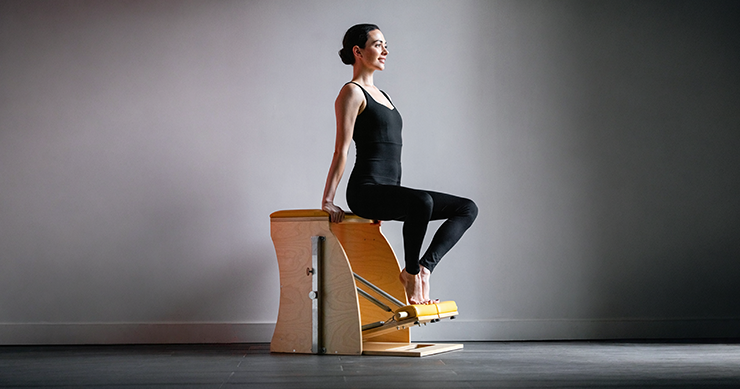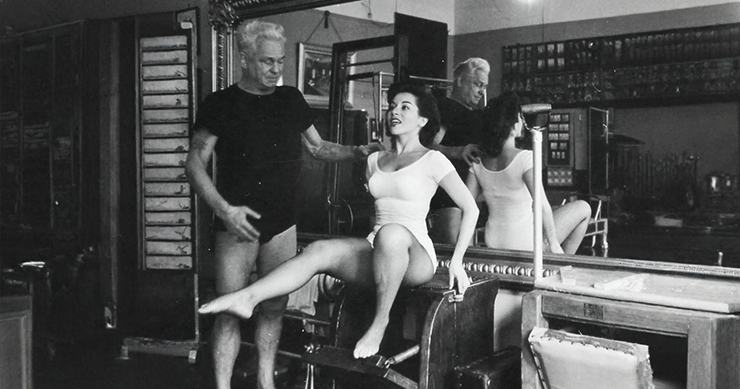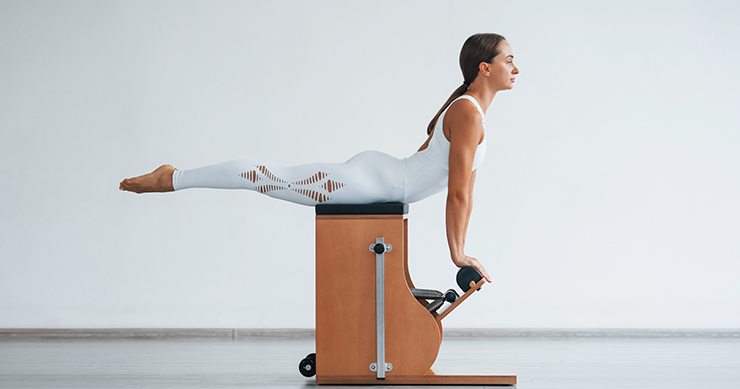The Wunda Chair: Small in Size, Giant in Results
- MindBody Pilates Studio
- Aug 1
- 3 min read

Can a simple chair transform you? If you practice Pilates, the answer is yes... and it's called the Wunda Chair. This small but demanding apparatus was created by Joseph Pilates himself as a way to train at home. To this day, it remains one of the greatest challenges—and rewards—of the classical system.
At Mindbody Pilates Studio, we use it to strengthen, challenge, and elevate our students' mind-body connection. Today, we'll tell you why this chair is much more than just an accessory... it's a true test of control, strength, and precision.

A Little History: The Gym That Fits in a Chair
Joseph Pilates designed the Wunda Chair as the first home exercise equipment. Every August, when his studio closed due to the New York heat, Joe required his clients to continue their practice at home with this convertible chair. He'd give them a list of exercises, and upon their return... he knew perfectly well who had done their "homework."
Even in a video from the 1930s, you can see Joe lift a seemingly normal chair and convert it into a Wunda Chair. It was an elegant, compact... and challenging apparatus. Its design not only allowed for exercise but also served as a traditional chair with a wooden back, promoting good posture.

What Makes It So Special Within the Pilates System?
Every apparatus in the studio has a purpose. The Reformer gives us support and resistance. The Mat tests our unassisted strength. The Cadillac offers suspension and control from another plane.
And the Wunda Chair... it tests us against gravity.
In the words of master teacher Jay Grimes, working with all the Pilates apparatus is like cooking with the best ingredients. And the Wunda Chair is the intense seasoning: direct, specific, and leaving no room for cheating.

It's Not Easy... And That's What Makes It Valuable
If you think that because it's small, it's less demanding, think again. There's no wide mat or stable platform. There's no external assistance. It's just you, the spring... and gravity.
From seated exercises to vertical pull-ups, every movement on the Wunda Chair requires:
Precision
Core strength
Balance
Absolute control
Even the "basic" chair exercises can seem impossible at first. That's why many students start on the High Chair, which offers more support, before progressing to the Wunda.

Take Your Reformer Skills to Another Level
Have you mastered "closing the carriage" on the Reformer with the Elephant exercise? Get ready for the Pull-Up on the Wunda Chair, where you'll do the same... but now in a vertical position. Here, you're no longer lying down. You're facing gravity with your entire body active. This not only strengthens your legs and arms but also refines your technique and deepens your connection to your center.

Is It Just For Advanced Practitioners?
No. It's for anyone who wants to improve. The Wunda Chair adapts to different levels and can be used to work on strength, mobility, and stability. That said, always ensure you have the supervision of a qualified instructor who can help you align your body and adapt the spring load. Many athletes, people in rehabilitation, or intermediate students can work with it and experience great benefits.
In Summary: One Chair, A Thousand Possibilities
The Wunda Chair is one of the best-kept secrets of the Pilates system. Compact, yes. But challenging, precise, and profoundly effective. If you want to take your practice to another level, improve your strength, balance, and control... the Wunda Chair can be your great ally.
At Mindbody Pilates Studio, we teach you how to integrate it safely, progressively, and creatively. Ready to try it? Schedule your class and discover the power of the small for yourself.








Comments